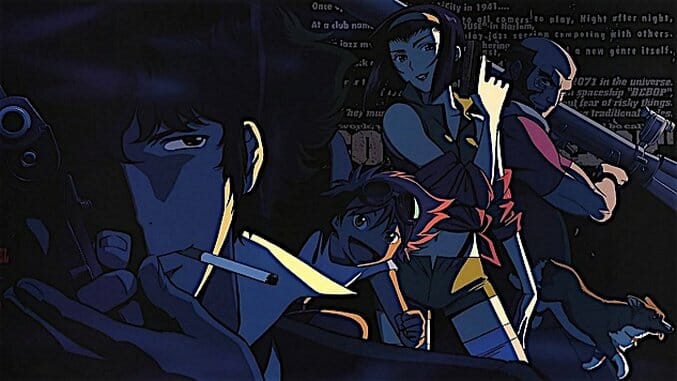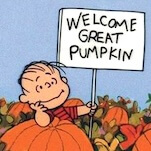The Live-Action Cowboy Bebop Series Has Potential, but Can It Deliver?
Tomorrow Studios’ adaptation has a lot of weight to carry.

Last week, news broke that Tomorrow Studios had inked a deal with Sunrise Inc. to co-produce a live-action television adaptation of Cowboy Bebop. The 1998 series, which originally aired on TV Tokyo before being rebroadcast on Cartoon Network’s late-night Adult Swim block, has gone on to become a perennial favorite among anime fans and a torch-bearing example in regard to the medium’s potential for sophistication and artistry. Tomorrow, a Los Angeles based production house partnered with ITV Studios, has been on something of a buying spree as of late, acquiring the rights to not only to a television adaptation of Bong Joon-ho’s Snowpiercer, but also the rights to John Ajvide Lindqvist’s Let the Right One In and Erik Axl Sund’s psychological horror series The Crow Girl. Though the series’ cast has yet to be announced, Chris Yost (Thor: The Dark World, Thor: Ragnarok) is currently slated to act as its lead writer.
Naturally, as is with any news of an American adaptation of a beloved foreign property, initial response to this announcement has ranged anywhere between “confused”and “livid.” With the recent critical fumble of Paramount and Dreamworks’ live-action Ghost in the Shell remake, as well as past examples of ingloriously tone-deaf adaptation such as Dragon Ball: Evolution, fans of the original Cowboy Bebop series have just cause to be apprehensive if not outright antagonistic towards an American studio handling the property.
Set in the year 2071, Cowboy Bebop follows the stories of four bounty hunters who, through either serendipity or happenstance, team up to hunt down criminals and eke out a living on the fringes of space. The series is lauded for many things, among them its action and anachronistic neo noir aesthetic, but also its thematic underpinnings of existentialism, nostalgia and ennui. All of which make it a quintessential touchstone of pre-millennial fiction. Produced by Hajime Yatate (a collective pseudonym for the works of director Shinichiro Watanabe, screenwriter Keiko Nobumoto, character designer Toshihiro Kawamoto, mechanical designer Kimitoshi Yamane and composer Yoko Kanno, among others) the series is highly regarded as nothing short of sacrosanct among a generation of anime fans who witnessed the medium’s globalization around the turn of the century. With a successful 26-episode run capped off by an exemplary feature-length film, why dredge up a series that’s already well enough made its mark?
Perhaps the answer is as simple as, “Some things are inevitable.”
Cowboy Bebop, perhaps more than any other anime series to date, has always been a prime target for American adaptation. Despite having not explicitly been produced with the intent of appealing to a western audience (anime production was far more insular and domestically focused at that time), director Shinichiro Watanabe’s inspirations were always global. Initially commissioned and sponsored by Bandai’s toy division, Watanabe was given carte blanche to direct the series, “So long as there’s a spaceship in it.” Initially drawing from the freewheeling ensemble energy of Lupin III, Watanabe’s inspirations expanded outward and grew to encompass three of his biggest passions: music, cinema and western television. Cowboy Bebop draws heavily from the era of French New Wave film, in particular the works of Jean-Luc Godard and Jean-Pierre Melville, as well as their spiritual disciples in the form of John Woo and Wong Kar-wai.
-

-

-

-

-

-

-

-

-

-

-

-

-

-

-

-

-

-

-

-

-

-

-

-

-

-

-

-

-

-

-

-

-

-

-

-

-

-

-

-








































